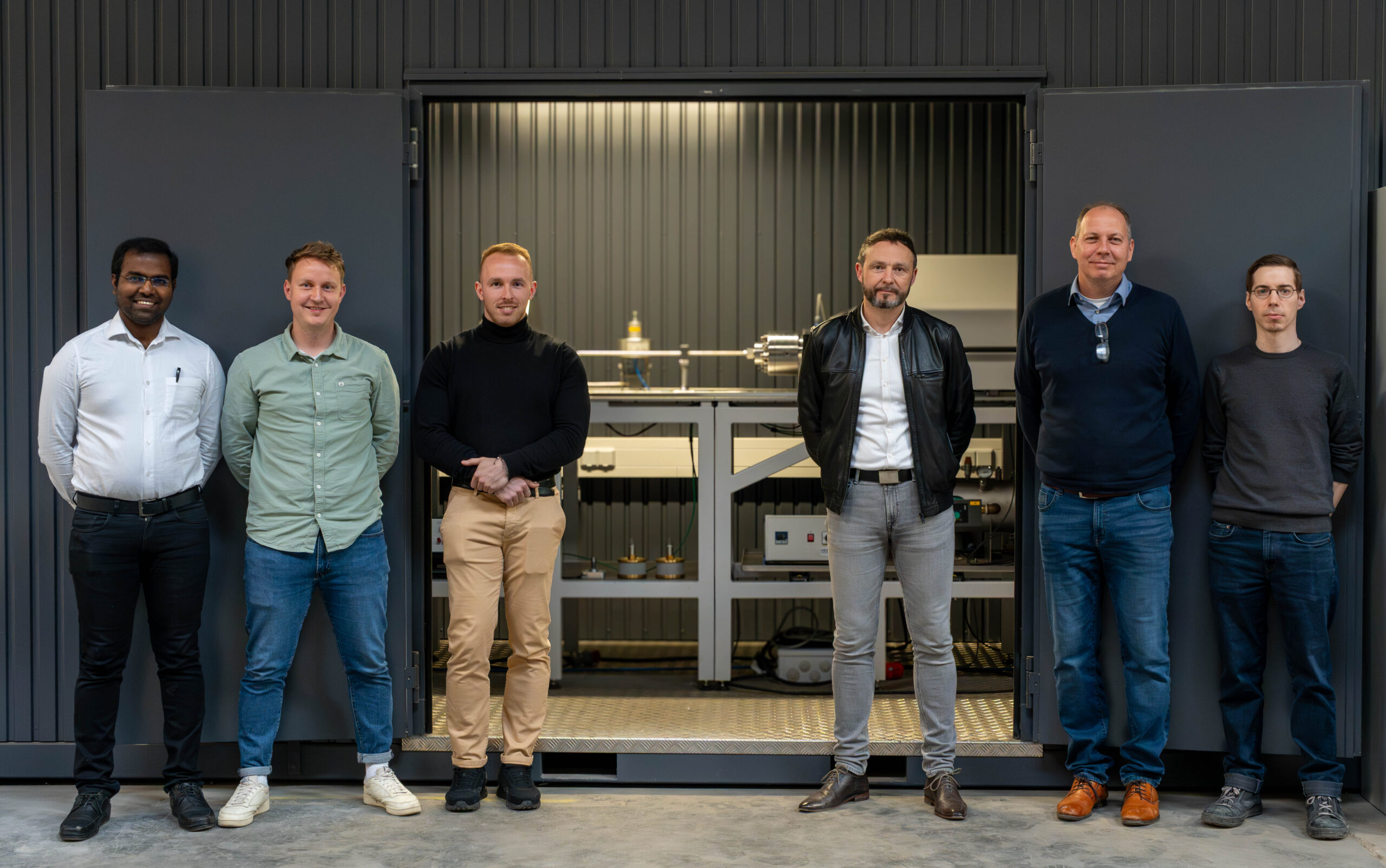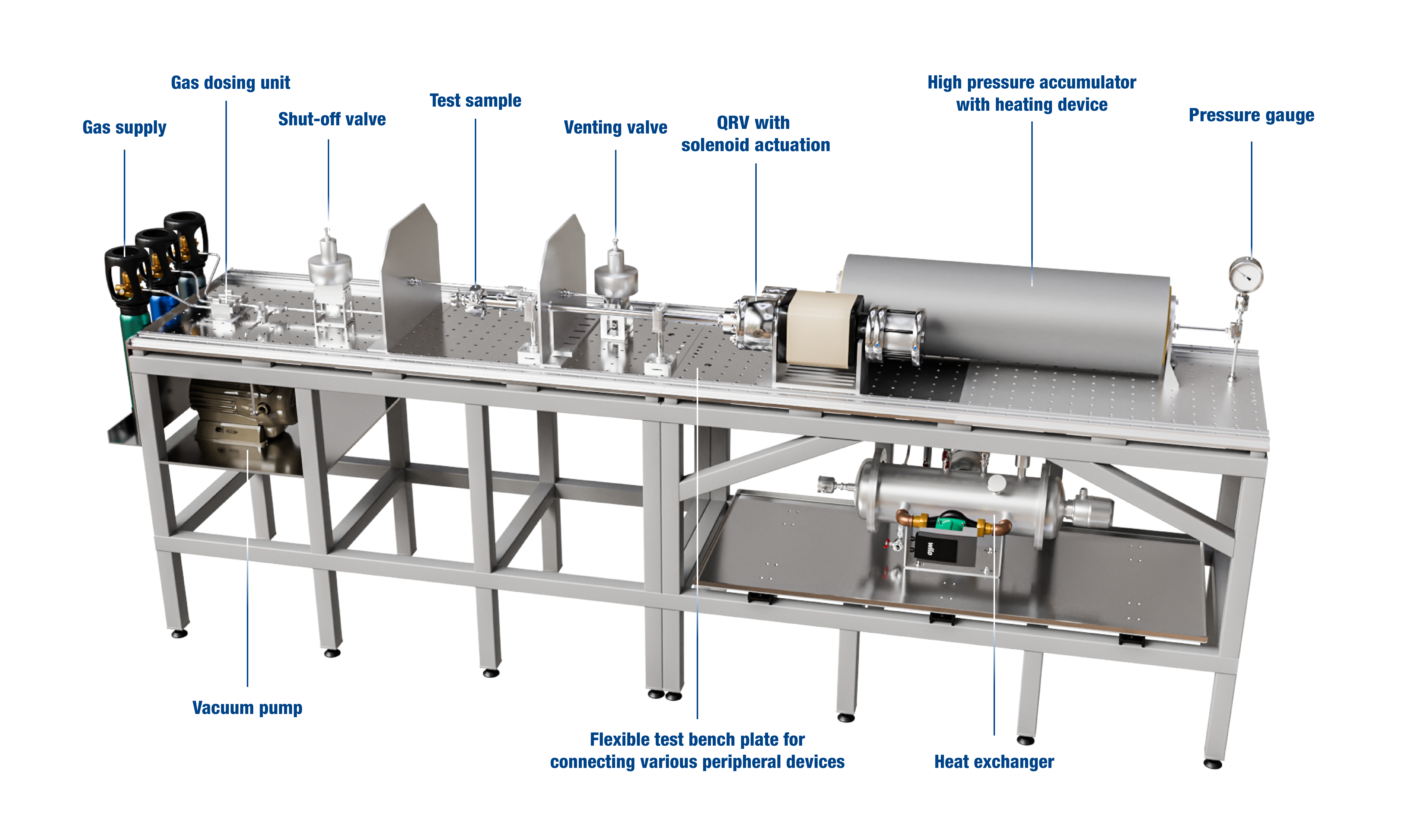A State-of-the-art test facility dedicated to researching pressure surge in oxygen components.
Oxygen is a lifeline. It makes up 21% of the air we breathe and plays a crucial role in medical treatments, particularly for patients with respiratory issues, as demonstrated during the Covid-19 crisis. However, researchers have recently found out that in high-pressure environments, oxygen behaves differently than under normal conditions. In such settings, materials become more flammable, and the risk of damage to life and property increases significantly.
This is where the University of Luxembourg and Rotarex step in. Professor Stephan Leyer, Grace Ligbado and Daniel Warnimont from the University of Luxembourg, in collaboration with Dr. Thomas Andreas, Dr. Karthick Selvam, Lukas Kauth, and Markus Schumacher from the R&D team at the Rotarex Group in Lingten, are working together to better understand and mitigate the associated risks. Their focus is on a critical issue: pressure surges that happen when oxygen is rapidly compressed, particularly when a valve is opened. The goal of their research is to conduct tests that will help prevent equipment failures and fires by gaining a deeper understanding of how these surges occur and how to control them.

A fruitful collaboration between Rotarex and Uni.lu
The collaboration between Rotarex and the University of Luxembourg allows them to leverage their combined expertise, advancing safety and paving the way for more reliable and secure applications in various fields.
To conduct the necessary experiments, both teams designed and developed a cutting-edge test facility that enables more accurate and reliable testing. This facility closely simulates real-world conditions, ensuring that laboratory tests reflect the actual risks associated with high-pressure oxygen systems. In order to help control the release of gas safely and efficiently, Rotarex also developed what we call a “Quick Release Valve” (QRV). The QRV allows for rapid and precise adjustments to the system’s pressure, preventing dangerous surges and ensuring the oxygen flow remains stable.
Meanwhile, the University of Luxembourg co-designed and operated the Oxygen Pressure Surge Test (OPST) facility, with its researchers and technical staff conducting experiments and analysing the data to improve safety standards.
Though still in the testing phase, the facility has already made significant progress. By using nitrogen gas to simulate pressure surges, the team has tested pressures up to 200 bar, with plans to scale up to 500 bar. Initial results are promising—pressure surges occur incredibly quickly, within just appr 6 milliseconds. This rapid pressure change confirms that the system can replicate real-life scenarios, where every millisecond matters.
Advancing safety and innovation
The different test results will be used to create computer simulations, such as CFD (Computational Fluid Dynamics) models, which will enhance the design of oxygen flow control equipment.
For now, the journey is far from over. In the coming months, the team plans to increase the pressure even further, aiming to reach the facility’s full capacity of 700 bar. Once nitrogen tests confirm the system’s reliability, they will begin working with pure oxygen, a crucial next step in understanding fire risks and safety hazards. Additionally, they will explore how factors such as valve opening speed and gas composition affect the severity of these surges.

The goal of this research is clear: to enhance safety in oxygen systems. By understanding the dynamics of pressure surges, the team aims to prevent equipment failures and fires that could have devastating consequences in both medical and industrial settings. In the long term, the findings will help refine safety regulations and establish new standards for high-pressure oxygen systems across industries.
The project is supported by the Luxembourg National Research Fund (FNR), which provides funding for this groundbreaking research.